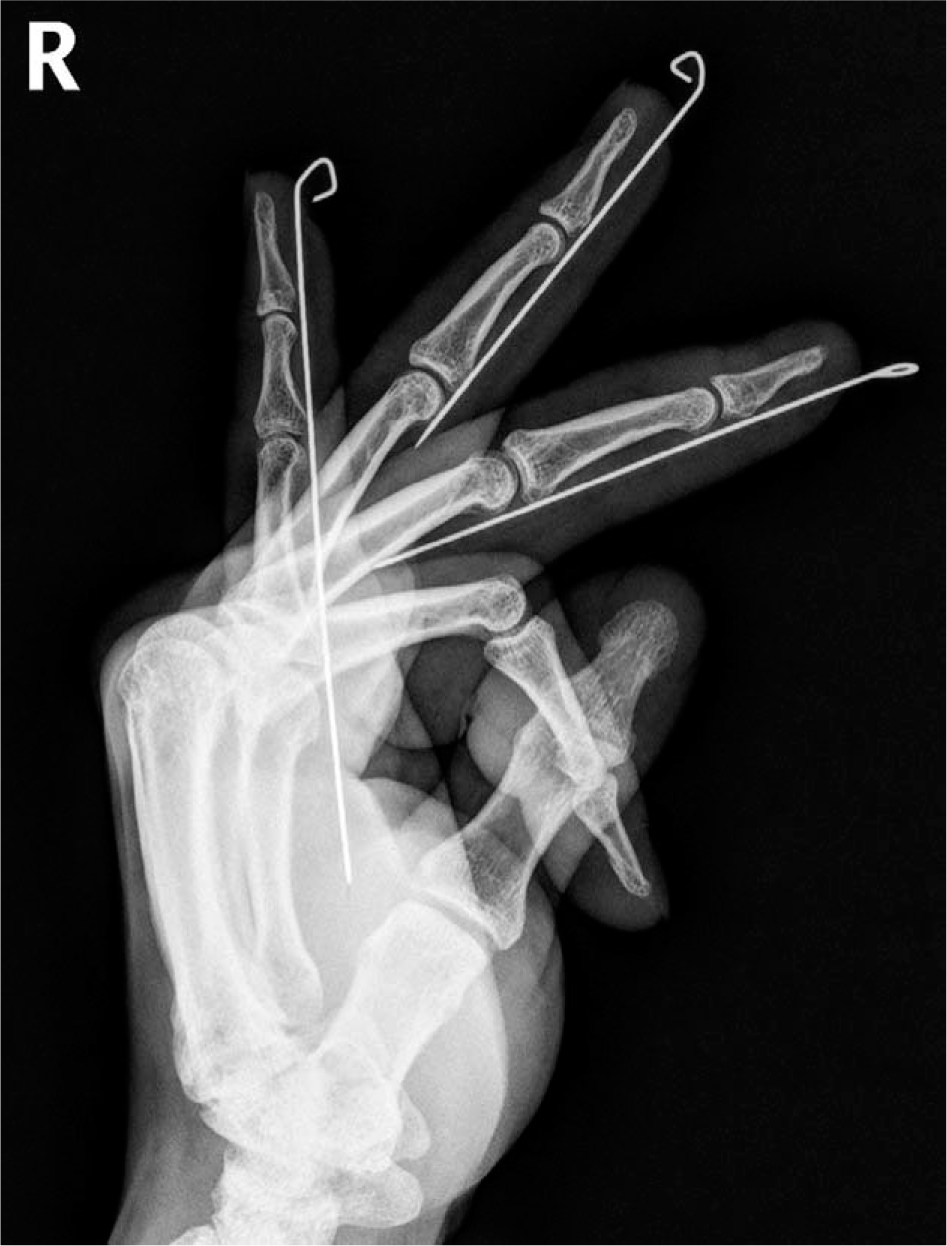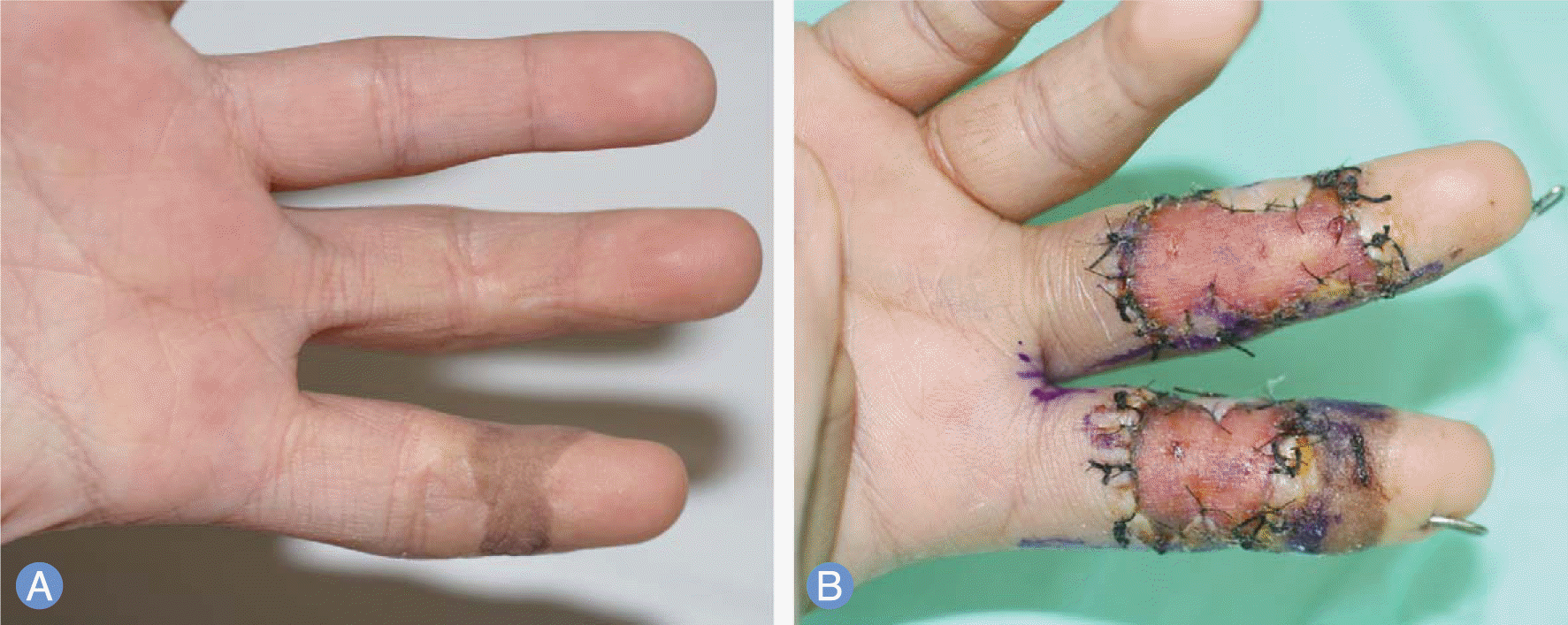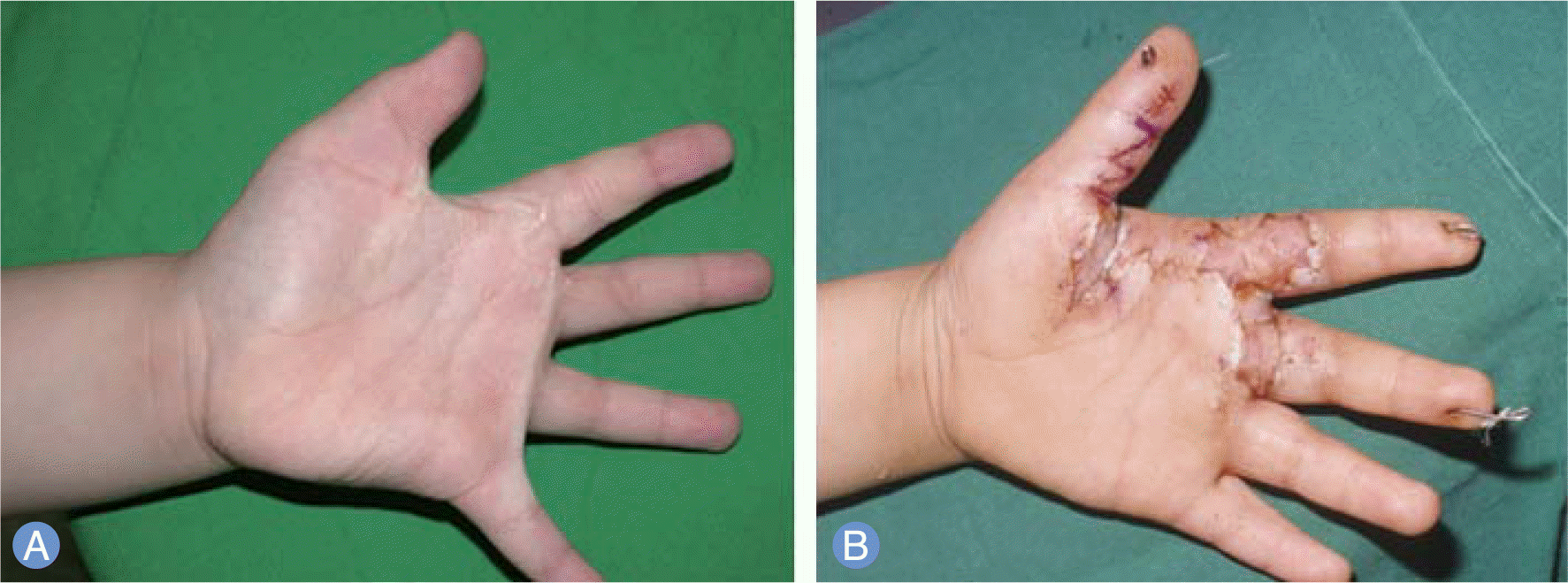Abstract
Purpose:
Finger immobilization by Kirschner-wire (K-wire) insertion may be used for postoperative stability after release of scar contracture. K-wire insertion through the phalangeal bone requires drilling and can result in joint and/or tendon injury or pain during wire removal. To prevent these problems, we inserted the K-wire through the soft tissue.
Methods:
Seventy-five fingers of 45 patients who underwent reconstruction of scar contracture of the fingers were immobilized by K-wire. After contracture release, just before skin grafting and/or local flap surgery, in full extension of the finger, a K-wire was inserted manually from the fingertip to the proximal phalanx or metacarpal bone through the soft tissue under the phalangeal bone, along the longitudinal axis on the volar side. If the graft site did not have enough soft tissue or the K-wire was felt on the recipient bed, the K-wire was inserted on the dorsal side of the finger. K-wires were manually removed two weeks after surgery.
Results:
In most cases, the time to insert the K-wire was 2-3 minutes per finger, and immobilization and stability was maintained for two weeks. In two fingers, the K-wire came out prematurely during wound care; this did not affect the overall outcome. There were no complications due to K-wire insertion or pain during removal.
Go to : 
References
1. Achauer BM, Bartlett RH, Furnas DW, Allyn PA, Wingerson EL. Internal fixation in the management of the burned hand. Arch Surg. 1974; 108:814–20.

2. Green DP, Hotchkiss RN, Pederson WC. Green’s operative hand surgery. New York: Churchill Livingstone;. 1999.
3. Sungur N, Ulusoy MG, Boyacgil S, et al. Kirschner-wire fixation for postburn flexion contracture deformity and consequences on articular surface. Ann Plast Surg. 2006; 56:128–32.

4. Larson DL, Evans EB, Abston S, Lewis SR. Skeletal suspension and traction in the treatment of burns. Ann Surg. 1968; 168:981–5.

5. Kalliainen LK, Drake DB, Edgerton MT, Grzeskiewicz JL, Morgan RF. Surgical management of the hand in Freeman-Sheldon syndrome. Ann Plast Surg. 2003; 50:456–62.

6. Jang YC, Kwon OK, Lee JW, Oh SJ. The optimal management of pediatric steam burn from electric rice-cooker: STSG or FTSG? J Burn Care Rehabil. 2001; 22:15–20.

Go to : 
 | Fig. 1.A postoperative X-ray after Kirschner wire insertion through the soft tissue. The wires placed on the volar side of the right third, fourth, and fifth fingers are immobilized in full extension and are inserted up to the proximal third of the third and fourth fingers to allow motion of the metacarpophalangeal joint. |
 | Fig. 2.Case 1. (A) A10-year-old child with burn scar contracture on the volar side of the ring and little fingers. (B) Postoperative view after full-thickness skin grafting. As the soft tissue at the skin graft site was insufficient, the K-wires were inserted on the dorsal side of the fourth finger and on the lateral side of the fifth finger. |
 | Fig. 3.Case 2. (A) A 6-year-old child with burn scar contracture on the first, second, and third web spaces and fingers of the left hand. (B) Ten days after full-thickness skin grafting and Z-plasty. The K-wires were inserted on the lateral side of the first and third fingers and on the volar side of the second finger. |




 PDF
PDF ePub
ePub Citation
Citation Print
Print



 XML Download
XML Download